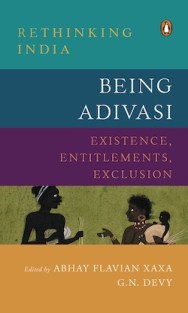The exhaustive, community-based work to bring all languages on record in the People’s Linguistic Survey of India also revealed the fate of the country’s multilingualism, says the project’s chairperson
The release of the People’s Linguistic Survey of India (PLSI) report at Gandhi Smriti in Delhi on September 5 will mark a significant milestone for 63-year-old Ganesh Devy’s Bhasha Research and Publication Centre based in Vadodara. It is the first survey of living Indian languages as people perceive them, conducted by the communities themselves. The 780 languages revealed are in stark contrast to the 2001 Census figure of 122 languages, following a 40-year policy of omitting languages with less than 10,000 speakers. Mr. Devy tells Chitra Padmanabhan, a Delhi-based writer, that the PLSI is a rights-based movement, which sees language as crucial for the effective development of fragile communities and for stemming the erosion of India’s diverse, multilingual, and composite heritage.
What was the aim of the People’s Linguistic Survey of India?
I have always felt that Indians relate to languages very differently from people elsewhere in the world, so I wanted to know how communities across India perceive their languages.
Primarily we wanted to find out how many living languages India has. We also wanted to see if language could be made into a fulcrum of micro-planning for development in diverse ecological and cultural contexts, especially among fragile coastal, island, forest and hill communities.
Working with tribals on their languages at Bhasha since 1996 helped me realise that there was no need to unduly privilege scripts — even English does not have a unique script of its own. Hence the thought that most other languages are derivative forms of Scheduled languages disappeared from my mind. I started according smaller languages greater respect.
You looked to communities to conduct this survey as well.
This kind of survey needed to be done by the communities themselves. Also, when you have no money, only people can be with you!
Bhasha built upon and extended its networks in States, trained and mobilised about 3,500 volunteers — academics, language experts, authors, schoolteachers, farmers, activists, bus drivers, and nomads. They worked with their linguistic communities in their respective States. An 80-member editorial collective joined us later to ground the project academically.
This was not a door-to-door Census, nor a marketing survey. Importantly, the respondents’ degree of intimacy with their respective languages was 100 per cent.
How was a language identified?
Over the years we have arrived at a simple format. For non-Schedule languages each community produced a 20-25 page essay: what language name, language history and peculiar features does a community recognise? What is its language grammar?
To avoid the risk of a stray concoction, the community must provide folk songs, stories or written literature as language evidence.
The format also included kinship terms, for we are a society of relationships, and terms related to time (memory) and space (imagination), which acquaint us with a community’s unique worldview, as do terms for colours and specific geographic features (snow in mountainous areas, water and waves in coastal areas).
Scheduled language formats had more domains — cinema, music, media, technology, education, governance — and were more extensive. Sometimes, formats were adapted for special needs. […]
What next?
We have begun a people’s ethnographic survey of India to compile 800 monographs in three years. Let communities tell us who they are and their ideas of enmity, friendship, suffering and joy. On September 7, in an event planned with the Sahitya, Lalit Kala and Sangeet Natak Akademies, we will launch a people’s eco-cultural survey of India. Let the culturally cohesive communities articulate their deep-rooted affinities to ecological, linguistic and culture areas extending beyond administrative districts. The three surveys can help build bridges among diverse language communities, strengthen Indian multilingualism and cultural pluralism, as well as the process of building India as a composite linguistic and culture area.
Many well-intentioned initiatives flounder as we don’t know what India really is. In my small way I’m trying to bridge the divide between thought and life created by colonialism. This method will have mistakes, but I have faith in my mission and the hope that future generations will improve on my work.
Source: “We are talking more using fewer words” by Chitra Padmanabhan, The Hindu, September 3, 2013
Address : https://www.thehindu.com/opinion/op-ed/we-are-talking-more-using-fewer-words/article5086343.ece
Date Visited: 18 February 2024
[Bold typeface added above for emphasis]

“It is worth noting that it is unimaginable to think of tribes as landless, as land and forest have been traditionally their life support system.” – Read an excerpt from Being Adivasi: Existence, Entitlements, Exclusion on Scroll.in | Find a copy in India >>
Worldcat library information: Virginius Xaxa & G.N. Devy >>
“There are no official records of evictions in India, but data collected by the advocacy group Housing and Land Rights Network showed the government destroyed at least six homes and forcibly evicted 30 people each hour in India in 2017. [The villagers] have vivid recollections of the forests they grew up in and the land that fed them.” –Learn more: “Enslaved for decades, indigenous Indians freed by land titles” >>
Tip: click on any red marker for details on endangered languages in a particular region of India.
Please note: the facts and figures cited (via hyperlinks) links call for updates and fact checking >>
Cultural invisibility – India’s 600 potentially endangered languages | Linguistic Survey of India (official website) >>